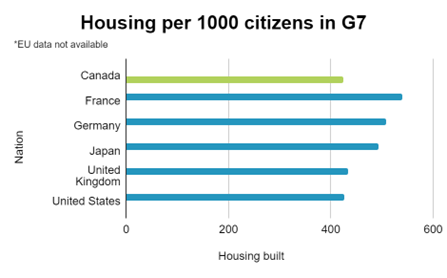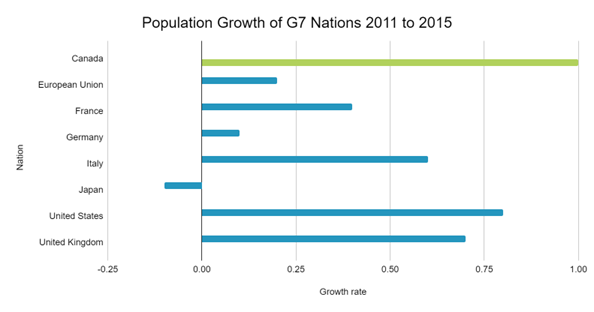Written by Susanne Urbina, Capacity Support Assistant (ESPC)
Note: This is an excerpt from our March 2025 Community Matters newsletter. You can read the full publication here.
One in six people in the world will be aged 60 years or over by 2030 (Statistics Canada, 2023). The growing interest in aging often excludes our Indigenous seniors’ voices and experiences from perspectives and comprehension on aging. We broaden our understanding of the diversity in successful aging by including older Indigenous adults in discussions.
Bent Arrow Traditional Healing Society is a non-profit organization that supports Edmonton’s Indigenous community. Shauna May and Brad Seneca started the Society in 1994 offering services like the Pathways program for youth who wanted to return to school, enter training or find work and later, the province’s child and family services department requested they open a group home. The success of the group home led the organization to develop other programs, resources and services for early childhood, adolescents, adult/parents, and seniors/grandparents. The organization continues to serve our Indigenous population with supports and programs including referrals, family wellness and health programs, soup and Bannock lunches, youth employment programs, family services, housing and financial services (Narine, 2016).
We interviewed Sophie Laboucan, the Seniors Wellness Coordinator at Bent Arrow, to get a perspective on Indigenous aging.
How have Indigenous seniors been supported over Bent Arrow’s 30-year history?
We have given support by listening to their needs, offering compassion and making them feel part of the community. Our Indigenous seniors share their life experiences, teachings, and teach us how to have a good life throughout each transition.
Historical and structural factors have influenced the health outcomes of Indigenous seniors such as the impacts of colonization, the loss of language and culture and the ongoing trauma they’ve experienced. These determinants have contributed to negative health effects. What are other factors affecting Indigenous older adults because of generational trauma?
Exploitation of Indigenous seniors is one of the factors of generational trauma. When seniors are taken advantage of because of ignorance of their rights, this adds to systemic abuse. A lack of trust in the healthcare system causes isolation and detrimental health outcomes for Indigenous seniors. There is also a lack of culturally relevant services and programs in healthcare, which make it difficult for Indigenous older adults to navigate the healthcare system.
Safe housing is often a concern for Indigenous seniors. If they indeed find housing, they may be exploited by being overcharged for rent or they may not receive much needed improvements to their living space.
Another factor to consider is when living on one’s own is no longer an option. Indigenous seniors are reluctant to move into long-term care facilities as this may retraumatize those who are residential schools’ survivors.
Many of the Indigenous seniors today were involved in the Sixties Scoop and in the Residential Schools. How might their experience of aging be different from others who have not experienced such complex trauma at an early age?
Physical abuse, sexual abuse, verbal abuse, inadequate nutritious meals and inadequate health care and loss of their culture and family ties negatively impacted life expectancy and quality of life for many, with that trauma being carried into senior hood. It has created issues with mental health, housing, food and financial insecurity, and lower literacy levels. By contrast, seniors who escaped or found a way out of the trauma are very capable today. They have been successful in raising their families having learned domestic skills, and other life skills.
“Those who can look forward and reach out, have done better and attained a good life.”
Aging was often thought of as a period of decline and dependency. In the 1980’s, a “successful aging” concept was designed with the measurement of low probability of disease and disability, high physical and cognitive functional capacity, and active engagement with life. Is there anything that Indigenous seniors do to ensure “successful aging” under this model?
Kana’wayh’ito’win (kana-wah-KOH-toh-win) translates to “Taking care of each other’s spirits.” In our community e.g.; social senior programs, having a sense of belonging, and a good support system, are the pillars we strive to support the seniors attending the Wahkomatowin senior programs.
My first position here was as a facilitator/outreach worker, offering programs to adults aged fifty-five plus, which subsequently produced the Wahkomatowin Seniors Wellness Program. My title now is Team Lead with a full time Senior outreach worker and a part-time facilitator working with me. This program launched in 2016, is free of charge and embodies Cree natural law, Wahkomatowin. This refers to the interconnectedness and kinship between people, communities, and nature. Their programs are based on the Medicine Wheel, which helps balance health and well-being for seniors by taking the emotional self, the spiritual self and lastly, the mental self into account. Ceremony, healthy meals, community and positive family connections are our predominant model used for aging well. Every effort is made to look at each person wholistically to address their specific needs.
Our seniors’ programs help improve and maintain physical health, and in turn, improve cognitive function. Active engagement is achieved through participation in our social groups to foster relationships. This is critical for seniors to avoid isolation, which can lead to disease and a decline in life expectancy. We schedule Kohkom’s (Grandmother’s) TeaTime offering tea, conversation, storytelling, and skill building; Mosum’s (Grandfather’s) Beer Den providing projects to encourage working with their hands and making connections; and Social Hub, a co-ed program with organized outings to places of interest in Edmonton. Crow’s Nest offers informational programing for seniors seeking resources through presentations and discussion to help make better, more informed choices, complete with healthy snacks and a bus ticket home if needed.
Elders contribute to their community and culture by passing down knowledge and skills, as well as mentor leaders in traditional ceremonies and ways of life. How does this contribute to the health of Indigenous seniors?
Our Elders are often seniors, but not all Indigenous seniors are Elders, and not all Elders are elderly. They have roles as teachers, counsellors, healers, and conflict resolvers in addition to having the responsibilities of passing down our Indigenous teachings, ceremonies, and culture. They support seniors to reconnect to culture and heal through land-based teaching by connecting with nature. The Medicine Wheel and the Seven Sacred Teachings are founding values in our culture. Also known as Grandfather Teachings these guidelines of LOVE, RESPECT, BRAVERY, HONESTY, HUMILITY, TRUTH, and WISDOM focus on the relationships with all of creation, and each other (Alberta Regional Professional Development Consortia [ARPDC], 2024).
“Successful aging” is often associated with economic or material acquisition, but those who find themselves in less favorable circumstances often experience blame or neglect. How does this mentality affect Indigenous seniors?
Indigenous seniors frequently face discrimination which causes social isolation in seniors often being ignored and being discriminated against or overlooked in both their communities and society at large. This marginalization has a significant impact on their mental, emotional, and physical wellbeing, as it leads to the neglect of their basic needs. When these seniors are disregarded, their access to essential resources—such as adequate housing, nutritious food, and a reliable income—becomes compromised. These basic needs are crucial for successful aging, as they provide the foundation for health, stability, and dignity in later years. Without these necessities, Indigenous seniors face heightened vulnerability and diminished quality of life. Indigenous seniors are considered at an elevated risk of experiencing social isolation due to factors such as racism, marginalized language, culture, poverty, and historic negative experiences.
Statistics show that Canadian Indigenous groups have a lower life expectancy. What critical work about successful aging needs to be done for Indigenous older people to increase life expectancy?
Providing supportive, culturally safe health care services, more Indigenous representation via health care navigators, supports for grandparents raising their grandchildren, collaboration with knowledge keepers to provide wholistic and culturally safe spaces for ceremony; example a smudge room. Indigenous speaking interpreters in hospitals, healthy family connections and good community supports such as supportive and welcoming senior programs, safe affordable housing, financial supports, mental health supports, transportation, and food for seniors would help increase life expectancy for seniors.
What are the different challenges to Indigenous seniors who reside on reserve or in rural or remote areas?
Residents on the reserve often do not have the same access to services as urban seniors. There is little or no access to computers or the internet, which can be an added challenge to senior resource services. Seniors are often unaware that certain services even exist, more needs to be done to disseminate information. Remote residents also face a lack of transportation services. However, I am pleased to share that some reserves in this area now have senior services and programs which offer transportation and lodging for medical appointments out-of-town.
Although these are some of the challenges that Indigenous seniors face living on the reserve or in rural and remote areas, living on traditional land, with access to traditional food and connection to culture can impact aging in a positive way.
In some cases, healthcare personnel are not adequately informed about Indigenous culture. What support can be given to this system and other programs to increase the health and longevity of Indigenous seniors?
The Medicine Wheel encompasses spiritual, physical, emotional, and mental wellbeing. Knowledge of this holistic worldview would also help healthcare workers take better care of our seniors. Many of the staff at Bent Arrow speak and understand Cree, which builds good relationships. Staff who speak in Indigenous languages would improve communication and one’s ability to heal. Being trauma informed, having cultural awareness, Indigenous navigators in hospitals to help assist the Indigenous seniors would be of significant help to bring a sense of understanding and ease to foster culturally safe health care. Visit Bent Arrow, we have cultural teachings available.
What non-medical models of aging can the non-Indigenous community foster to increase the longevity of Indigenous seniors?
As a result of how Indigenous people have been treated in Canada, our Indigenous seniors have shared, lived experiences of racism and prejudice. I suggest, building relationships to foster trust, increasing your knowledge of Indigenous culture, understanding Indigenous identity and our way of life, attending a powwow, or ceremony or sitting with elders to listen to their stories. It is important also to foster culturally safe health care and safe space as well as provide appropriate supports needed for the Indigenous senior.
What provisions of services in culturally appropriate manners would assist in the challenges of Indigenous seniors?
Culturally providing safety for Indigenous seniors in health care, and society where they are free from prejudices, discrimination, systemic racism. This is essential for Indigenous seniors, providing traditional and holistic care. These draw on their strengths from their identity, their culture and community.
What service agencies are available for Indigenous seniors in Edmonton?
Bent Arrow Traditional Healing Society, The Aboriginal Seniors, Indigenous Health Centre at Anderson Hall, Red Road healing society, Sage, Ben Calf robe, Metis Nation, and others.
Resources
World Health Organization. (2023). Mental health of older adults https://www.who.int/news-room/factsheets/detail/mental-health-of-older-adults
Narine, S. (2016, August). School named in honor co-founder of Bent Arrow society. Windspeaker.com. https://windspeaker.com/news/schoolnamed-in-honour-co-founder-of-bentarrow-society
Alberta Regional Professional Development Consortia {ARPDC}. (2024). Empowering the Spirit: Seven Sacred Teachings. https://empoweringthespirit.ca/cultures-ofbelonging/seven-grandfathers-teachings/



